The Baltic Fine Dining Experience - Latvia, Lithuania and Estonia (2025) Embark on a gastronomic journey through the Baltic countries this autumn and winter, when crisp air, cozy interiors and seasonal produce make dining a delight. From Michelin-starred temples of gastronomy to hearty local cuisine-filled taverns, here are recommendations you won’t want to miss. Top 15 Restaurants Across the Baltics 1. JOHN Chef’s Hall (Riga, Latvia) Location: Ausekļa iela 22, Rīga LV-1010, Latvia Website: www.johnrestaurant.com Michelin Recognition: One Michelin Star (2024) Description:Located in the heart of Riga, JOHN Chef’s Hall is the city’s latest culinary sensation. Chef Kristaps Sīlis leads a team that turns seasonal Latvian produce into modern art on the plate. The restaurant’s minimalist yet elegant interior, accented by candlelight and natural textures, makes for an unforgettable atmosphere. Menu & Price: Tasting menu (8–10 courses): €165 per person Wine pairing: +€85 Dishes change with the season — expect refined combinations like smoked eel with horseradish and apple, duck breast with wild herbs, and birch sap desserts. Why Visit:Perfect for travelers who want to experience Latvian fine dining at its peak, JOHN Chef’s Hall is an essential stop during autumn and winter in Riga — where warmth, creativity and precision meet. Max Cekot Kitchen (Riga, Latvia) Location: Jelgavas iela 42, Riga, Latvia Website: www.maxcekot.com Michelin Recognition: Latvia’s First Michelin Star (2023) Description:Hidden in an industrial building on the outskirts of Riga, Max Cekot Kitchen is a temple of modern gastronomy. The open-concept dining room surrounds the kitchen, where Chef Max Cekot personally presents each course. Every ingredient is locally sourced or foraged, then reimagined through avant-garde techniques. Menu & Price: 10-course degustation: €190 – €220 per person Optional beverage pairing: +€95 Highlights include charred cabbage with trout roe, wild boar with fermented plum, and honey-infused pastries.
The Baltic Fine Dining Experience – Latvia, Lithuania and Estonia (2025)
Embark on a gastronomic journey through the Baltic countries this autumn and winter, when crisp air, cozy interiors and seasonal produce make dining a delight. From Michelin-starred temples of gastronomy to hearty local cuisine-filled taverns, here are recommendations you won’t want to miss.
Top 15 Restaurants Across the Baltics
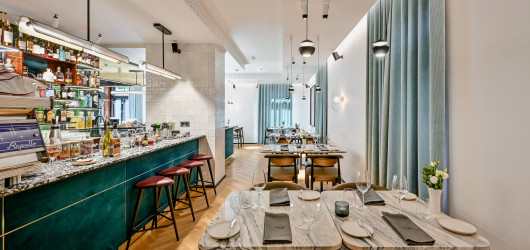
1. JOHN Chef’s Hall (Riga, Latvia)
Location: Ausekļa iela 22, Rīga LV-1010, Latvia
Website: www.johnrestaurant.com
Michelin Recognition: One Michelin Star (2024)
Description:
Located in the heart of Riga, JOHN Chef’s Hall is the city’s latest culinary sensation. Chef Kristaps Sīlis leads a team that turns seasonal Latvian produce into modern art on the plate. The restaurant’s minimalist yet elegant interior, accented by candlelight and natural textures, makes for an unforgettable atmosphere.
Menu & Price:
Tasting menu (8–10 courses): €165 per person
Wine pairing: +€85
Dishes change with the season — expect refined combinations like smoked eel with horseradish and apple, duck breast with wild herbs, and birch sap desserts.
Why Visit:
Perfect for travelers who want to experience Latvian fine dining at its peak, JOHN Chef’s Hall is an essential stop during autumn and winter in Riga — where warmth, creativity and precision meet.

Max Cekot Kitchen (Riga, Latvia)
Location: Jelgavas iela 42, Riga, Latvia
Website: www.maxcekot.com
Michelin Recognition: Latvia’s First Michelin Star (2023)
Description:
Hidden in an industrial building on the outskirts of Riga, Max Cekot Kitchen is a temple of modern gastronomy. The open-concept dining room surrounds the kitchen, where Chef Max Cekot personally presents each course. Every ingredient is locally sourced or foraged, then reimagined through avant-garde techniques.
Menu & Price:
10-course degustation: €190 – €220 per person
Optional beverage pairing: +€95
Highlights include charred cabbage with trout roe, wild boar with fermented plum, and honey-infused pastries.
Why Visit:
A dining experience as much about storytelling as flavor — Max Cekot Kitchen offers intimacy, precision and originality. It’s a must for culinary travelers seeking Riga’s most innovative meal.
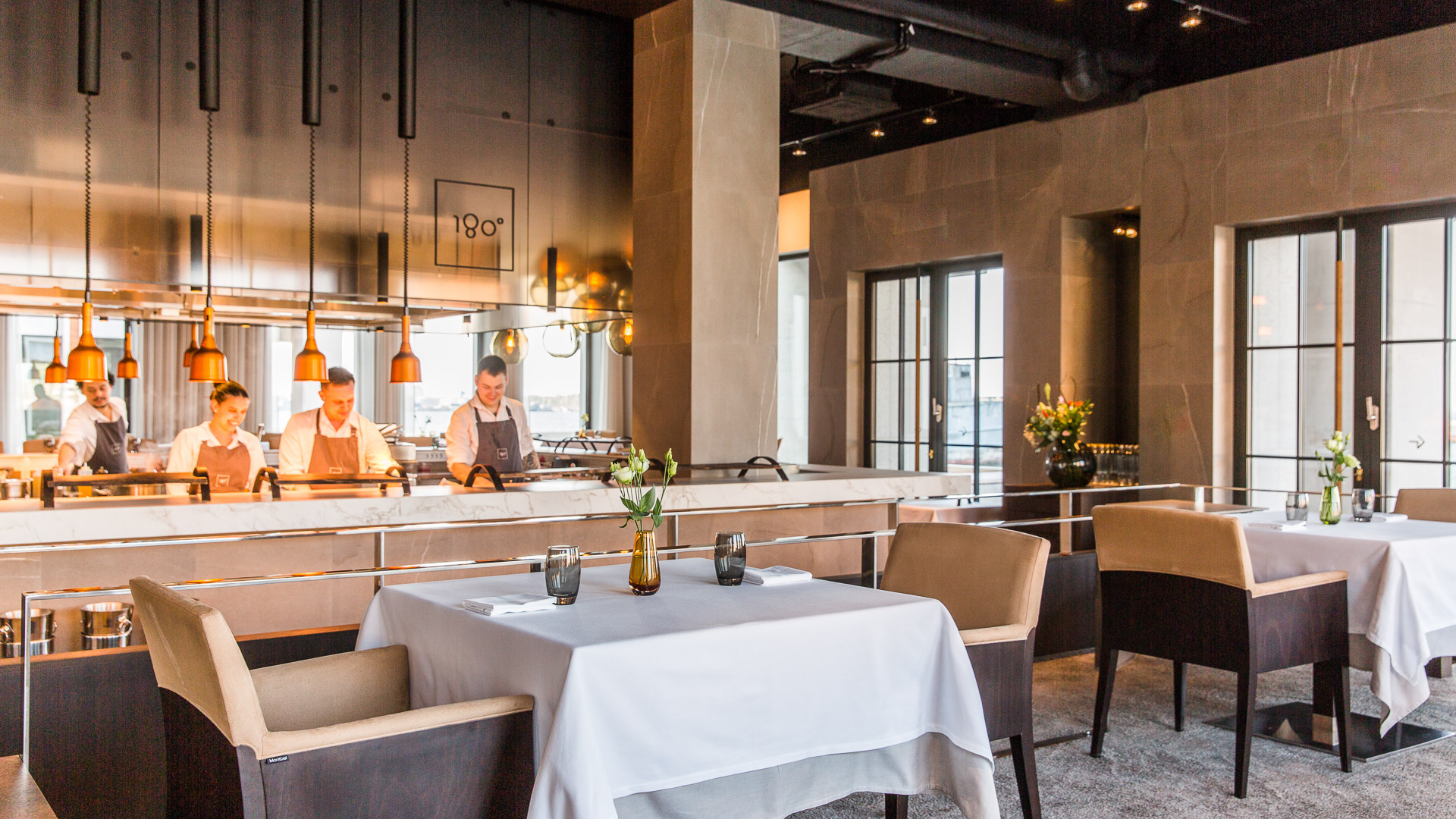
3. 180° by Matthias Diether (Tallinn, Estonia)
Location: Staapli 4, Port Noblessner, Tallinn 10415, Estonia
Website: www.180degrees.ee
Michelin Recognition: ⭐⭐ Two Michelin Stars (2022 – 2025)
Description:
As Estonia’s first and only two-Michelin-starred restaurant, 180° by Matthias Diether defines Baltic haute cuisine. The restaurant, located in a former submarine factory overlooking Tallinn Bay, offers dramatic views and even more dramatic flavors. Chef Diether’s tasting menu takes diners through refined, artfully balanced dishes that marry local produce with international finesse.
Menu & Price:
Grand tasting menu: €230 per person
Classic menu: €145
Wine pairing: +€110 – €160
Expect dishes like crab with fennel and yuzu, venison with forest herbs, and Nordic berries in white chocolate snow.
Why Visit:
180° is the pinnacle of Estonian gastronomy — an unforgettable dining experience blending creativity, precision, and world-class hospitality. Visit in winter for cozy fine dining as snow falls outside Noblessner’s bay windows.

4.Džiaugsmas (Vilnius, Lithuania)
Location: Vilniaus g. 28, Vilnius, Lithuania
Website: www.dziaugsmas.com
Michelin Recognition: One Michelin Star (2024)
Description:
Meaning “Joy” in Lithuanian, Džiaugsmas lives up to its name. Chef Martynas Praskevičius crafts contemporary Lithuanian dishes using hyper-local ingredients — many grown or foraged just outside the city. The restaurant’s Nordic-inspired interior provides a relaxed, modern backdrop for serious gastronomy.
Menu & Price:
Tasting menu: €90 – €110 per person
À la carte options available (€14–€35)
Dishes may include smoked beetroot tartare, duck with fermented cherry glaze, and rye-based desserts.
Why Visit:
A joyful celebration of Lithuania’s culinary evolution — Džiaugsmas balances sophistication and approachability. Ideal for both first-time visitors and seasoned food lovers exploring Vilnius in colder months

5. Pas Mus (Vilnius, Lithuania)
Location: Subačiaus g. 2, Vilnius, Lithuania
Website: www.pasmus.lt
Michelin Recognition: One Michelin Star (2024)
Description:
“Pas Mus” — meaning “At Our Place” — embodies the Lithuanian sense of warmth and authenticity. The restaurant focuses on honest, creative cuisine made from small-farm produce, often foraged by the chefs themselves. The atmosphere is understated, elegant, and deeply personal.
Menu & Price:
Seasonal tasting menu: €85 – €100 per person
Wine pairing: +€50 – €65
Signatures include smoked trout with sorrel butter, quail with forest mushrooms, and birch syrup custard.
Why Visit:
Pas Mus offers an intimate look into Lithuania’s modern food culture — refined yet heartfelt. A perfect dinner choice for visitors to Vilnius seeking depth, emotion, and exceptional local flavor.
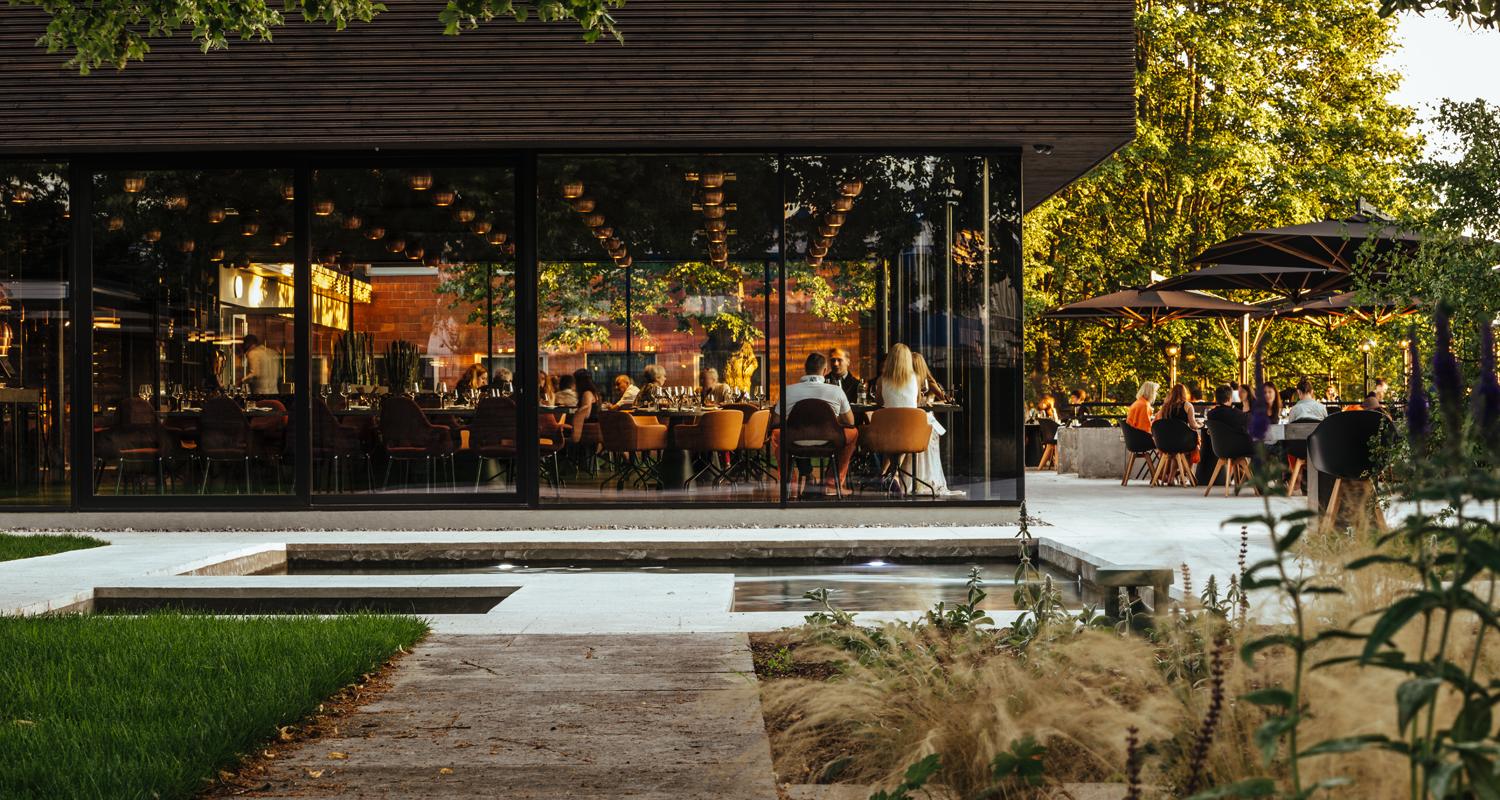
6.Tuljak (Tallinn, Estonia)
Location: Pirita tee 26e, Tallinn, Estonia
Website: www.tuljak.ee
Michelin Recognition: ️ Bib Gourmand (2022 – 2025)
Description:
Tuljak is a Tallinn institution — a mid-century-modern restaurant with panoramic sea views and an elegant but approachable menu. Chef Tõnis Siigur, also behind NOA, presents a refined yet comforting take on Estonian cuisine. The atmosphere is lively, warm and perfect for both lunch and special dinners.
Menu & Price:
Why Visit:
Recognized with a Bib Gourmand for outstanding value, Tuljak is ideal for travelers seeking excellent food without the formality of fine dining. Come for the sunset views in autumn or a cozy meal by the sea in winter.

7. Pavāru māja (Līgatne, Latvia)
Location: Līgatne Parish, Amata Region, Latvia — about 1 hour’s drive from Riga, near Gauja National Park.
Website: www.pavarumaja.lv
Michelin Recognition: Michelin Green Star (2024) for sustainable gastronomy and use of locally sourced ingredients.
Description:
Pavāru māja — “The Chefs’ House” — is a countryside gem where nature, sustainability and fine dining meet. Founded by a team of top Latvian chefs, the restaurant sits in a beautifully restored rural house surrounded by forest and fields. The chefs craft a seasonally changing tasting menu based entirely on Latvian produce — vegetables from nearby farms, herbs from the garden, and fish or game from the Gauja region.
Menu & Price:
Expect dishes such as smoked trout with beetroot and dill, forest mushroom consommé, and roasted venison with juniper jus — all plated with Nordic simplicity and elegance. Vegetarian and vegan tasting options are also available on request.
Why Visit:
Pavāru māja is more than a meal — it’s an immersive experience in Latvia’s natural bounty. Guests are invited to explore the garden, chat with the chefs, and see where their food comes from. Perfect for a day trip from Riga, especially in autumn when the surrounding forest glows in golden colors or in winter, when the cozy wood-fired interior makes dining feel like a warm embrace.

8. NOA Chef’s Hall (Viimsi / Tallinn, Estonia)
Location: Ranna tee 3, Viimsi, just outside Tallinn, Estonia
Website: www.noarestoran.ee
Michelin Recognition: ⭐ One Michelin Star (2022 – 2025)
Description:
NOA Chef’s Hall, often called “NCH”, is Estonia’s coastal fine-dining jewel. Overlooking the Baltic Sea and Tallinn’s skyline, it offers a breathtaking setting matched by world-class cuisine. Led by chefs Tõnis Siigur and Orm Oja, the kitchen blends Nordic minimalism with local Estonian ingredients and global inspiration.
The dining room, seating only about a dozen guests, creates an intimate experience where each dish is presented personally by the chefs — making it as much a culinary performance as a meal.
Menu & Price:
Expect dishes such as Baltic shrimp with sea buckthorn and dill oil, Estonian lamb with pine-smoked carrots, and exquisite seaweed-infused desserts. Every course reflects seasonal ingredients and modern craftsmanship.
Why Visit:
NOA Chef’s Hall is a must-visit for anyone seeking Estonia’s highest level of gastronomy — ideal for special occasions or romantic winter dinners with sweeping seaside views. Come in autumn for sunsets over the water or in winter for a cozy fireside tasting with snow on the shore.
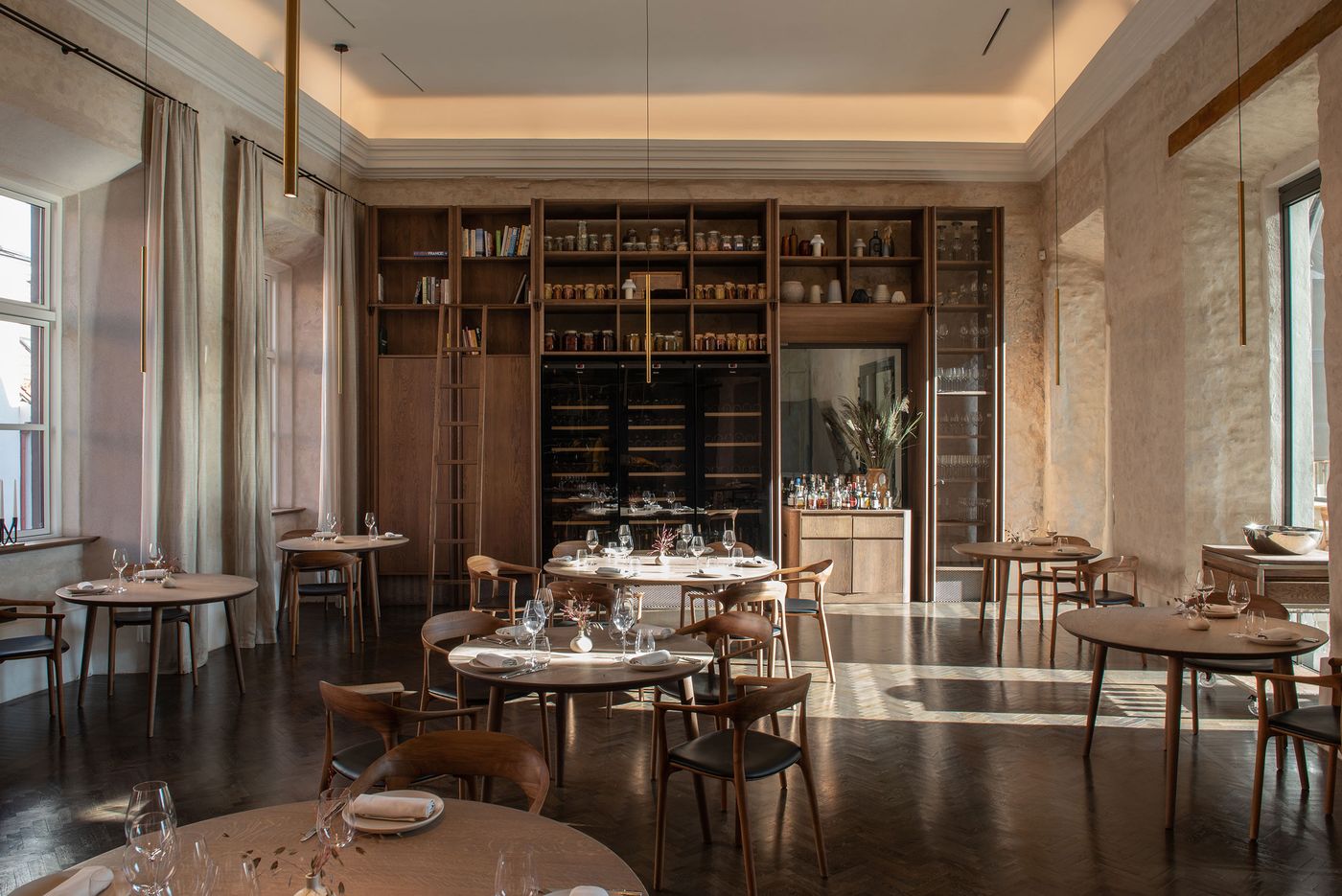
9. Nineteen18 (Vilnius, Lithuania)
Location: Paupio g. 28, Vilnius Old Town, Lithuania
Website: www.1918.lt
Michelin Recognition: ⭐ One Michelin Star (2024)
Description:
Located in the creative Paupys district of Vilnius, Nineteen18 embodies the new wave of Baltic gastronomy. Chef Andrius Kubilius and his team source ingredients from the restaurant’s own farm, just 30 km outside the city, turning each dish into a story of Lithuanian land and season.
The minimalist dining room contrasts beautifully with the complexity on the plate. Expect innovative tasting menus that reinterpret Lithuania’s culinary heritage with fermentation, pickling and modern Nordic techniques.
Menu & Price:
Signature creations include fermented tomato consommé with herbs, beef with wild mushroom glaze, and desserts highlighting forest berries and rye.
Why Visit:
Nineteen18 is the heart of modern Lithuanian fine dining — elegant, intimate, and deeply rooted in sustainability. It’s the perfect stop in Vilnius for travelers exploring the Baltic food renaissance this autumn or winter.

10. Demo Loftas (Vilnius, Lithuania)
Location: Švitrigailos g. 29, Vilnius, Lithuania
Website: www.demoloftas.lt
Michelin Recognition: ⭐ One Michelin Star (2024)
Description:
Demo Loftas is where art, music, and fine dining converge. Set inside the trendy Loftas cultural complex, this Michelin-starred restaurant delivers an urban gourmet experience unlike anywhere else in the Baltics. Industrial interiors meet candlelit tables, and the kitchen fuses modern European flavors with local produce.
Chef Justinas Kapkovičius curates a menu that is bold and creative — think Baltic sea fish with fermented cucumber, duck breast with apple ash, and rye bread ice cream with caramelized honey.
Menu & Price:
Why Visit:
Demo Loftas brings together Vilnius’ creative energy and culinary excellence. Ideal for design lovers, couples, or anyone wanting to see how Lithuania’s new generation of chefs blends tradition and innovation. Visit in the colder months to enjoy warm hospitality amid Vilnius’ vibrant nightlife.
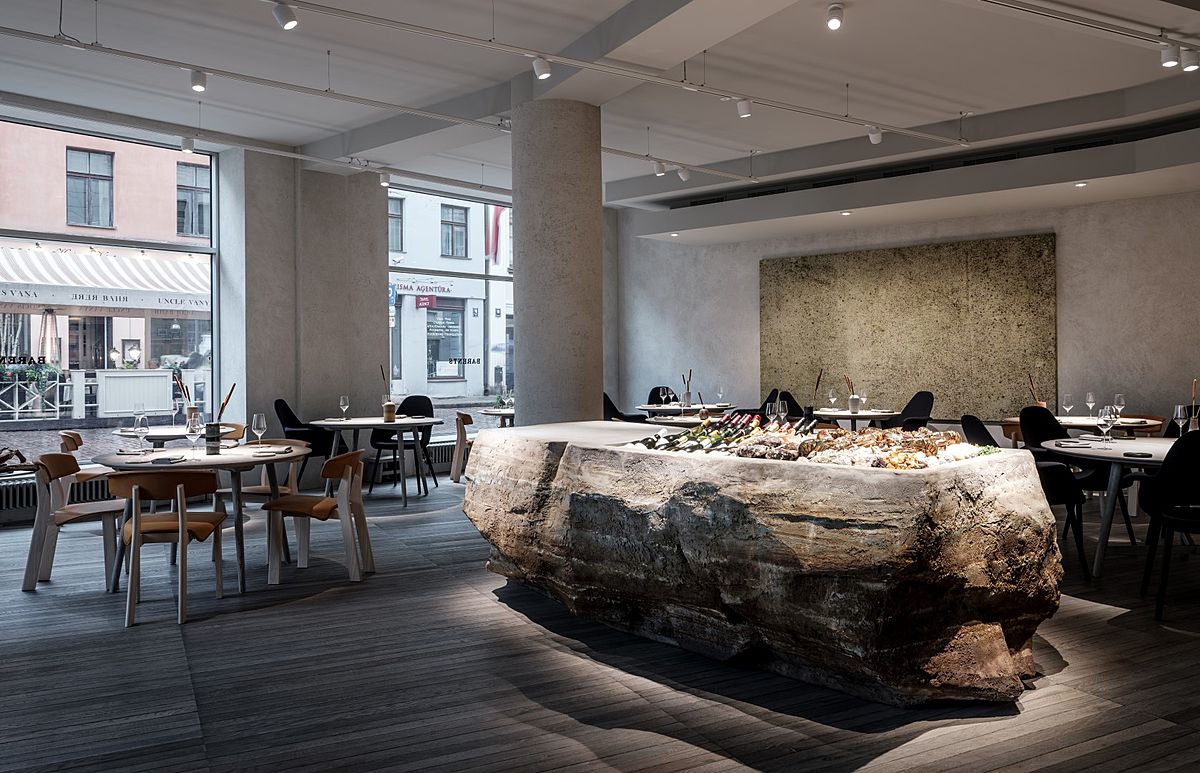
11. Barents (Riga, Latvia)
Location: Smilšu iela 3, Old Town, Riga, Latvia
Website: www.barents.lv
Michelin Recognition: Michelin Guide Selection (2025)
Description:
Situated in the heart of Riga’s Old Town, Barents celebrates the Nordic-Baltic seafood tradition with impeccable style. The interior is calm and elegant, highlighting natural materials that mirror the purity of its ingredients. Chef Mārtiņš Sirmais and his team focus on freshness — fish and shellfish arrive daily from the cold northern seas, while local farms provide vegetables and herbs.
Menu & Price:
À la carte mains: €28 – €45
Tasting menu: €120 – €140
Wine pairing: +€70 – €90
Signature dishes: Baltic oysters with cucumber mignonette, cod with fermented seaweed, and rye-flour crêpe with seabuckthorn.
Why Visit:
Barents defines contemporary Nordic seafood dining in Latvia — refined yet deeply connected to its coastal roots. A perfect evening stop after a day exploring Riga’s historic centre, especially cozy in autumn and winter when candlelight reflects off the stone walls.
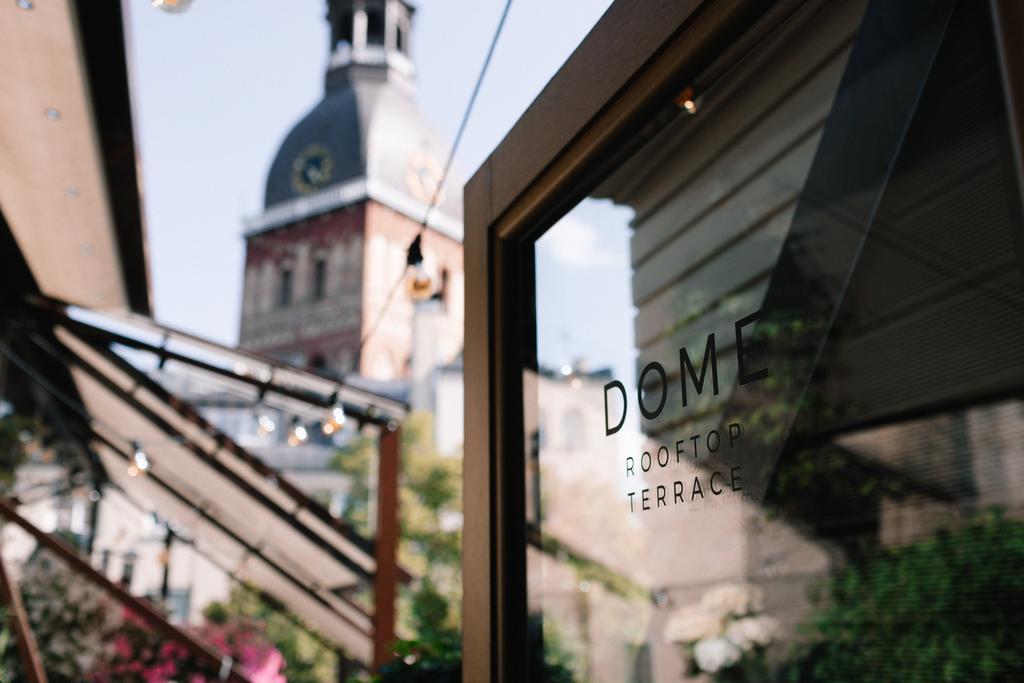
12. Le Dôme (Riga, Latvia)
Location: Miesnieku iela 4, Old Town, Riga, Latvia
Website: www.hotelledome.com
Michelin Recognition: Michelin Guide Selection (2025)
Description:
Tucked inside the elegant Hotel Le Dôme, this fine-dining restaurant combines French technique with Latvian produce. The dining room’s warm wood tones and soft lighting create an intimate atmosphere, while the open kitchen brings an element of theatre to the experience.
Chef Maris Janson focuses on precision and flavor, with seafood and seasonal vegetables taking center stage.
Menu & Price:
5–7 course tasting menu: €95 – €125
Wine pairing: +€60 – €80
Highlights: Pan-seared scallops with celeriac purée, venison with juniper sauce, and honey parfait with pine nuts.
Why Visit:
Le Dôme is Riga’s classic choice for a romantic gourmet dinner or business meal in refined surroundings. In the colder months, its polished service and comfort-driven menu make it one of the city’s most reliable high-end restaurants.
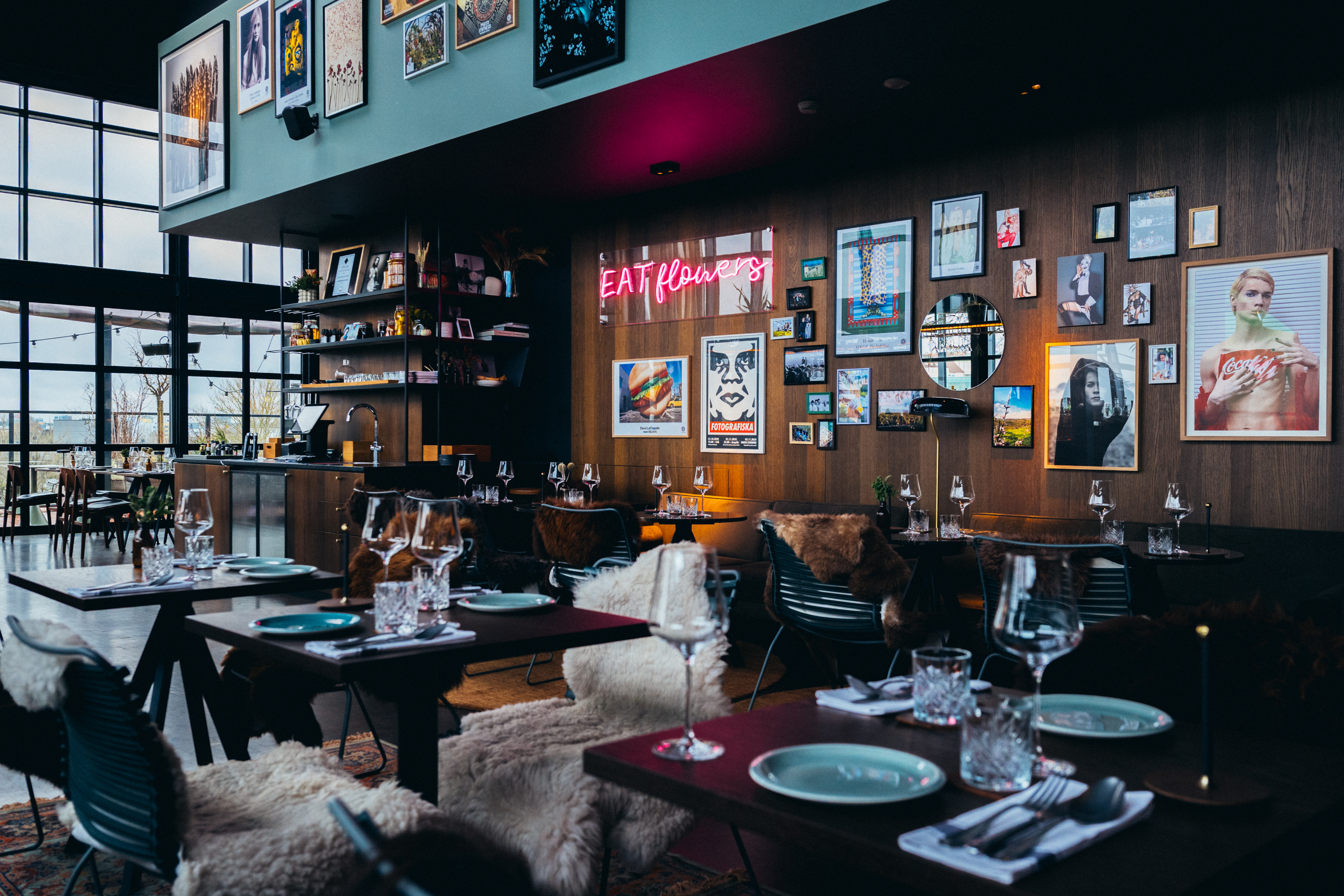
13. Fotografiska Restaurant (Tallinn, Estonia)
Location: Telliskivi Creative City, Telliskivi 60a-8, Tallinn, Estonia
Website: www.fotografiska.com/tallinn
Michelin Recognition: Michelin Guide Selection (2022 – 2025)
Description:
Perched atop the Fotografiska photography museum in Tallinn’s creative district, this restaurant brings together art, sustainability and gastronomy. Head chef Peeter Pihel, a pioneer of the Baltic slow-food movement, serves dishes rooted in zero-waste philosophy and local sourcing.
The atmosphere is contemporary yet relaxed, with panoramic views over the city.
Menu & Price:
Seasonal tasting menu: €85 – €105
À la carte mains: €25 – €38
Wine pairing: +€55
Sample dishes: Jerusalem artichoke with hazelnut, Baltic herring with fermented cucumber, and apple sorbet with spruce tips.
Why Visit:
Fotografiska Restaurant perfectly reflects modern Tallinn — artistic, sustainable and forward-thinking. Come in autumn for rooftop sunsets or winter for candlelit dining after browsing the museum’s latest exhibition.

14. Hiis (near Tallinn, Estonia)
Location: Vääna-Jõesuu, Harju County, ~30 min drive from Tallinn
Website: www.hiisresto.ee
Michelin Recognition: ⭐ Michelin Green Star (2024)
Description:
Nestled amid forest and coastal dunes west of Tallinn, Hiis is a sanctuary for nature-based cuisine. Chefs Roman Saarand Rene Uusmees honor the seasons with ingredients grown, foraged or caught within a short radius of the restaurant. Expect smoke, ferment, and fire — ancient techniques reimagined for modern tastes.
Menu & Price:
Tasting menu (6–8 courses): €95 – €120
Beverage pairing (wine or non-alcoholic): +€55 – €70
Typical plates: wild mushroom broth with roasted grains, Baltic perch with sea herbs, birch-sap sorbet.
Why Visit:
A true eco-gourmet escape just outside Tallinn. The Michelin Green Star celebrates Hiis’s deep commitment to sustainability, from waste-free practices to renewable energy. Visit in autumn for forest flavors or in winter for a tranquil meal by the fireplace.
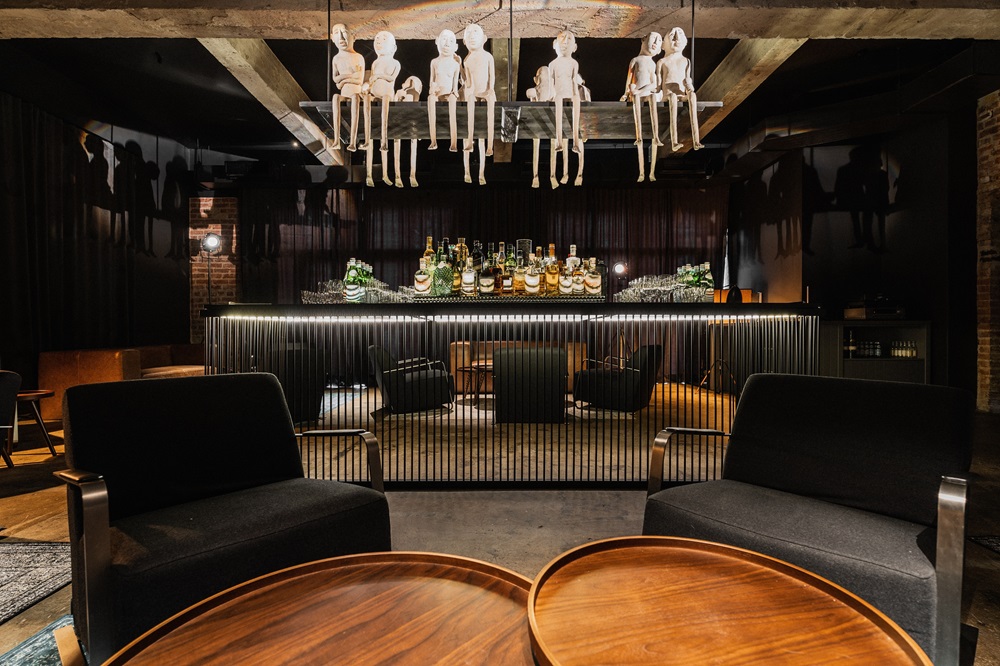
15. KEST (Cēsis, Latvia)
Location: Valmieras iela 1, Cēsis LV-4101, Latvia
Website: kest.lv
Michelin Recognition: Included in the Michelin Guide for Latvia.
Description:
KEST is a refined fine-dining restaurant located in the historic town of Cēsis, offering a gastronomic journey under the direction of Chef Māris Jansons. The venue combines a bright Scandinavian-inspired dining room with a darker lounge area filled with jazz ambiance, creating a dual-phase experience.
The name “Kest” draws from local heritage — in ancient times, the Livs referred to the opposite bank of the Gauja River as “kest,” meaning “over there / on the other side.
Menu & Price:
Six-course tasting menu: approx €85 per person.
On certain occasions: four-course menu: approx €45.
Beverage pairings available.
Signature offerings include a blend of local Latvian produce and creative presentation — for example yogurt & honey panna cotta with apple and sorrel granita, or halibut with pickled grapes and bisque velouté.
Why Visit:
If you’re staying in Riga but wish to venture into the countryside for something exceptional, KEST in Cēsis is a compelling choice. The historic town itself offers charm, while the restaurant serves a modern yet locally grounded gourmet meal. Especially in autumn and winter, when surroundings cool and the interior warmth becomes central, it’s a memorable stop.
Final Thoughts: Discover the Flavors of the Baltics
From the seaside elegance of Tallinn to the historic streets of Vilnius and the art-nouveau charm of Riga, the Baltics have firmly established themselves as one of Europe’s rising culinary destinations. These 15 exceptional restaurants — each unique, yet united by creativity and authenticity — define the region’s new gourmet identity.
Latvia: Nature, Purity & Northern Soul
Latvia’s chefs bring forest, sea, and farm to the plate with exceptional finesse. In Riga, JOHN Chef’s Hall and Max Cekot Kitchen push boundaries with artistic tasting menus, while Barents and Le Dôme showcase local seafood and French-inspired precision. Outside the capital, Pavāru māja in Līgatne and KEST in Cēsis offer countryside experiences where nature meets haute cuisine — each with a heartfelt connection to the land.
Estonia: Nordic Innovation on the Baltic Coast
Estonia’s dining scene blends Nordic minimalism and sustainable thinking. 180° by Matthias Diether stands tall with two Michelin stars — a benchmark for Baltic excellence. NOA Chef’s Hall and Tuljak reflect the country’s refined coastal style, while Fotografiska brings sustainability to Tallinn’s creative heart. For something truly green, Hiis near Tallinn offers a Michelin Green Star experience surrounded by forest and sea air.
Lithuania: Modern Heritage & Warm Creativity
Vilnius is a treasure trove of modern Lithuanian gastronomy. Džiaugsmas, Pas Mus, and Nineteen18 each hold Michelin stars for their bold yet soulful cooking — dishes rooted in local heritage but reimagined for today. Demo Loftas, meanwhile, merges art, design, and flavor for a dining experience that’s pure Vilnius energy — urban, creative, and unexpected.
The Baltic Fine Dining Experience
Together, these 15 restaurants form a culinary map of the Baltics, showing how far the region has come in just a few years. Expect:
Local ingredients celebrated in inventive ways.
Sustainable and zero-waste philosophies embraced at every level.
Nordic-style elegance balanced by genuine warmth and hospitality.
Exceptional value compared to Western Europe’s Michelin dining scene.
Whether you’re sampling smoked trout in Latvia, seaweed desserts in Estonia, or rye ice cream in Lithuania, you’ll find that each restaurant tells a story — of the land, the season, and the people who bring it all to life.














